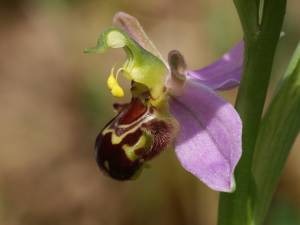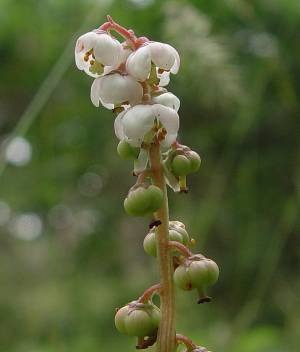Dr Phil Smith’s Wildlife Notes
June 2007
The June weather was a mixed blessing but was good for our sand-dune flowers which were beginning to look a bit droughted at the start of the month. The wild orchids, in particular, have been quite magnificent, including an estimated 20,000 marsh-orchids of several kinds at Altcar Rifle Range. Also there, were Common Twayblade (Listera `ovata), Dune Helleborine (Epipactis dunensis), Marsh Helleborine (E. palustris), Pyramidal (Anacamptis pyramidalis) and Bee Orchids (Ophrys apifera). The last two are increasing on the Sefton Coast due to our warming climate. Thus, I found a splendid colony of 139 Bee Orchids around the pumping station north of the Coastguard Station at Hall Road. Many were unusually large, the tallest being 43cm (1ft. 5 in.) high. The lovely brick-red Early Marsh-orchid (Dactylorhiza incarnata ssp. coccinea) is so abundant in our dune-slacks at this time of year, it is easy to forget that this mainly coastal sub-species is nationally scarce. We must have one of the largest populations in Britain.

The Isle of Man Cabbage (Coincya monensis ssp. monensis) is another of our flag-ship plants, being confined to a few west-coast places in Britain and in no other country. In 1992, a long-established colony at Blundellsands was destroyed by development but, in the nick of time, some young plants were moved to two nearby areas of apparently suitable dune habitat at Crosby Marine Park and Hall Road. I have been monitoring their progress at one or two-year intervals ever since. This June, the two populations totalled 1323 plants, a great success story for conservation!
As it has recently been listed by the Lancashire Wildlife Trust as “endangered”, a survey of Common Wintergreen (Pyrola minor) was carried out in late June by members of the Liverpool Botanical Society. Not to be confused with the much commoner (with us) Round-leaved Wintergreen (P. rotundifolia), Common Wintergreen has been known for about 25 years at two places in Ainsdale National Nature Reserve but is extinct in most other Lancashire haunts. At Ainsdale, the surveyors located an encouraging six colonies, with thousands of plants covering about 590m2. By remarkable coincidence, Pat Lockwood discovered another large population, with an area of 102m2, on the National Trust Estate at Formby Point. What a bonus! I went with her to see the new site and was even more amazed to find, nearby, numerous plants of the rare Smooth Cat’s-ear (Hypochaeris glabra). This tiny relative of the Dandelion has only one other post-war record in South Lancashire. The eagle-eyed Mrs Lockwood also scored again a few days later with a single plant of the beautiful Common Sea Lavender (Limonium vulgare) on Birkdale Green Beach. This classic salt-marsh plant has been extinct in South Lancashire since the 19th century.

While our local plant-life has hogged the headlines this month, other wildlife groups have had their moments. I saw nine species of dragonfly at ponds on the Birkdale Sandhills Local Nature Reserve on 23rd June, including the locally uncommon Broad-bodied Chaser (Libellula depressa) and Black-tailed Skimmer (Orthetrum cancellatum). Like the butterflies, they have been hit by the bad weather, but there was a notable influx of migratory Painted Ladies (Cynthia cardui) early on, while our local speciality, the Dark Green Fritillary (Argynnis aglaja), was showing well at Ainsdale on 21st June; quite an early date.
Natterjack Toads spawned again in the middle of the month, when their breeding sites re-flooded. This is unusual, but not unprecedented, and they may have a chance to produce toadlets if the wet weather continues.
Bird-watchers often struggle to find anything unusual in mid-summer but a Red-necked Phalarope at Martin Mere was an attraction early on and the breeding Avocets, both there and at Marshside, are always good value. The ornithological month ended on 29th with a real highlight for hardy sea-watchers – a record count of 1630 Manx Shearwaters off Formby Point.
